Gentle Reader,
The recent Global Conference in Long Beach held by the company whose products I rely on to support my optimal health, reflected some big picture changes in our world’s approach to health. Perhaps it would be more correct to say, big picture trends in our world’s health challenges and a call to approach those challenges from a different perspective. From the Ebola outbreak in Africa to the obesity epidemic in the more opulent populations, we are experiencing greater threats to physical health and well-being across the globe. Huge sums of money go toward finding medications to cure the threats. For the first time in history, our children may not reach the ages of their grandparents and parents. While many in the US and Canada live to be 100 and even more, their health span is not keeping up with their life span because of health challenges. The research in the medical field is geared to curing illness. A staggering number of people of all ages take prescription medications, and this number is on the increase. Wouldn’t it be wonderful to reduce medication instead of increasing reliance on drugs?
What the Shaklee Corporation medical and research staff focus on is prevention. Their web site reflects this “Healthy Foundations” – “Healthy Solutions” approach, encouraging people to look at their health concerns and direct their attention and dollars to bringing their bodies and minds up to a peak level of performance through nutritional support. They might even be able to reduce medication. “But”, you might counter, “there are so many non-medical options on the market today, all screaming for your attention, and they all seem to be less expensive.”
How much is optimal health worth to you? Where is the proof that Shaklee’s “foundations” and “solutions” are more effective? I urge you to do your own research on the effectiveness topic as I did so many years ago. First, my body responded positively to the foundations program. Then I wrote to Shaklee asking for their research papers so I could read for myself how the studies were conducted, how they controlled for variables, who their test population was (did I fit that profile?), etc. My research supported what my body experienced and I was All In for good, letting all the noise of other product offerings, regardless of the price, fade from my attention.
One woman who is complaining of lack of focus and forgetfulness attributes these health failings to age. I asked her if she was OK with that progression or would consider slowing it down, maybe even reversing it. She said she was skeptical of all medicine, and that supplements seemed like the same thing to her. That got me thinking about my own health history. I started out in a medical family where the latest drug was offered for the slightest symptom and the firm belief was “better living through chemistry.” I offered her research papers so she could educate herself. She really didn’t want to continue on this downward path and was open. “But”, she added, “I won’t retain research documentation. How have these supplements affected people’s health?, was her next question.
I have pointed you to the research. Here are a couple of testimonies for you. The first is about our immune boosting supplement, Nutriferon. There are several excellent studies using this supplement. You can find them on the web. This will be especially interesting to anyone with thyroid challenges.
November 24, 2013
Shaklee testimonial on Nutriferon:
I ordered my first bottle of Shaklee Nutriferon on 4/20/2010:
When my husband was found to have COPD the first of 2013, I started giving him a double dose (4 pills) a day. Then when his tests with the pulmonary specialist started getting better numbers, he is just taking 1 dose of 2 pills a day. He still has some breathing problems but his last test showed normal numbers. He is helping himself also by walking every day and watching what he eats. I contribute Nutriferon and his change in lifestyle helped him with his condition.
I was diagnosed with having a thyroid problem 44 years ago and I have been on Synthroid ever since then. I have been faithful about getting a physical with blood tests once a year. Throughout all those years, the dosage of Synthroid has never gone down. In April, 2010 I started taking 1 dose (2 pills) of Nutriferon a day. In June, 2013, I had my regular yearly tests and the doctor lowered the dosage and after 3 months I had another blood test and he lowered the dosage again. I am now taking .123 MG a day which is what I was taking years ago. I will have another blood test in Feb. 2014 to find out if he needs to lower again. This had never happened in all the 44 years of taking thyroid medicine.
Also, I was put on Benicar 20 MG for high blood pressure in 2007 and now this year the doctor has said to split the pill and take half a pill a day.
My husband and I are going to continue taking Nutriferon, since we are convinced it is helping us with overall health. I have it on Autoship.
I want to thank Mary Reece and Joyce Brown with introducing me to Nutriferon. I started taking Nutriferon to boost my immune system and it has done so much more.
Connie Protsman, Atmore, Alabama
This testimony is about depression, one of the primary causes of prescription medication in the US. Perhaps there is another way to handle mental health challenges.
Ten years ago, I found myself in a very deep depression (even suicidal at times) as a result of situational and familial stresses. As a result of a very tuned-in nurse at the embassy (in Rabat, Morocco) who asked the right question that got me to open up and discovered that I would benefit greatly from taking anti-depressants. I started taking them January of 2004. I began with Zoloft then changed to Paxil within a few months; in addition I sought psychological support from an US-trained psychiatrist there in Rabat.
I began feeling better and more functional pretty quickly. However, within 6 months I realized I had gained significant weight. This was surprising to me because I had started teaching fitness classes again because I felt so much better, was working out very regularly and eating better! Within 10 months, I had gained nearly 55 pounds! I was, at this point, back in the US and my doctor switched me to Prozac in hopes of stopping the weight gain. It did, for the most part, but also I wasn’t able to lose any of that weight gained.
Fast forward a few years, I wasn’t really happy like I remembered being prior to my depression and I had another psychiatrist tell me that I would be on anti-depressants the rest of my life after having had 2 episodes of severe post-partum depression. This scared me! I was determined to prove him wrong…somehow. On the anti-depressants, I wasn’t able to really experience the highs of happiness and joy; the only benefit was that I was no longer experiencing the deep lows and depression, which was great.
January 2010, my neighbor reintroduced me to Shaklee (I grew up using the Shaklee cleaners and supplements due to a loving mother) and suggested that I try the Stress Relief Complex (SRC) to help me with the added stresses of 3 growing and demanding children and an ever-increasingly stressful marriage. Within 3 months, because I loved how much better the Stress Relief Complex had helped me, I started taking Shaklee’s Vitalizer pack to increase my nutrition AND started my Shaklee business! I spoke with my Doctor and told her I’d like to come off of the Prozac because of how I was feeling/doing taking the Shaklee supplements. She was, thankfully, on-board with me but made me promise to keep an RX just in case and if I experienced any bad side effects to talk to her. Within 10 months of beginning the Stress Relief Complex and adding in Vitalizer, I realized that I hadn’t taken an anti-depressant for several weeks! That was October 2010! I’ve been anti-depressant free ever since!
Since then I was able to lose ALL of the weight I’d gained, plus more, using the Shaklee weight management system, continuing my multivitamin use, Stress Relief Complex as needed and adding in extra B-Complex!
More recently, I’ve learned about the benefits of increasing vitamin D3 and extra calcium if depression /anxiety also causes increased muscle tension. I’ve been able to help many women come off of their anti-depressants naturally and now, help members of my own family with nutritional support with similar issues.
*Always talk to your doctor about your plans; get their support and seek professional counseling as needed, as well as increase your own personal support network of trusted family and friends.* I have also made thorough use of a therapist for counseling purposes as needed and continue to seek support from her as needed! All things considered – for myself and others who’ve tried this approach — nutritional therapy and counseling services have made the most difference when combined!
Happier and Healthier than ever! –CK Gaush, April 2014 www.ckgaush.myshaklee.com
Be Well, Do Well and Keep Moving!
Betsy
206 933 1889
If you have had a significant health benefit from using Shaklee supplements, resulting is getting off medications, please let me know. Others would like to hear your story.
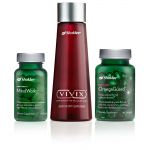
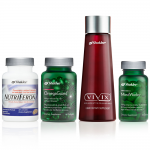
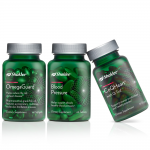
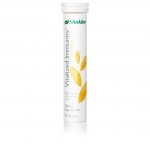
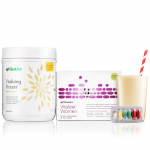
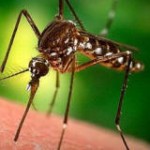

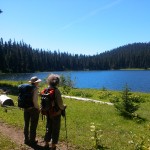
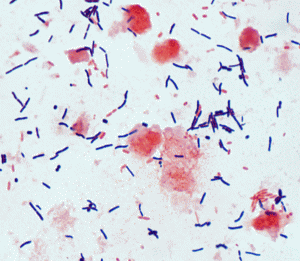
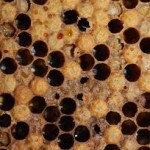

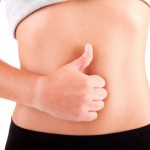
![Long_Beach_7-16-14jpg_(1)_(2)[1]](http://www.grandmabetsybell.com/wp-content/uploads/2014/07/Long_Beach_7-16-14jpg_1_21-300x222.jpg)
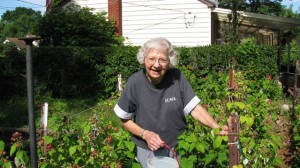




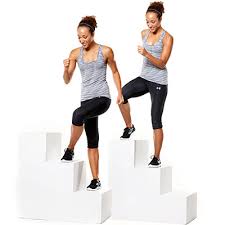
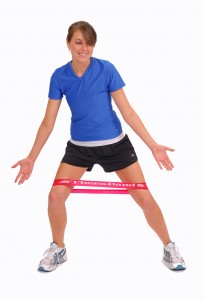
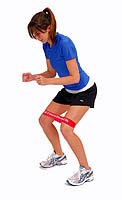

 The rope is the perfect length to attach to a flexible tree without bending the second tree. You can imagine if you pulled on the rope the flexible tree would bend over, and if you let go of the rope, the flexible tree would stand up straight again. This is a simple explanation of how a muscle pulls on a bone and causes the joint to move.
The rope is the perfect length to attach to a flexible tree without bending the second tree. You can imagine if you pulled on the rope the flexible tree would bend over, and if you let go of the rope, the flexible tree would stand up straight again. This is a simple explanation of how a muscle pulls on a bone and causes the joint to move. If you then tried to stretch the rope so the flexible tree was standing straight, you would cause the knot to get tighter and the remaining rope would have to overstretch on both sides of the knot in order for the flexible tree to stand up straight.
If you then tried to stretch the rope so the flexible tree was standing straight, you would cause the knot to get tighter and the remaining rope would have to overstretch on both sides of the knot in order for the flexible tree to stand up straight.